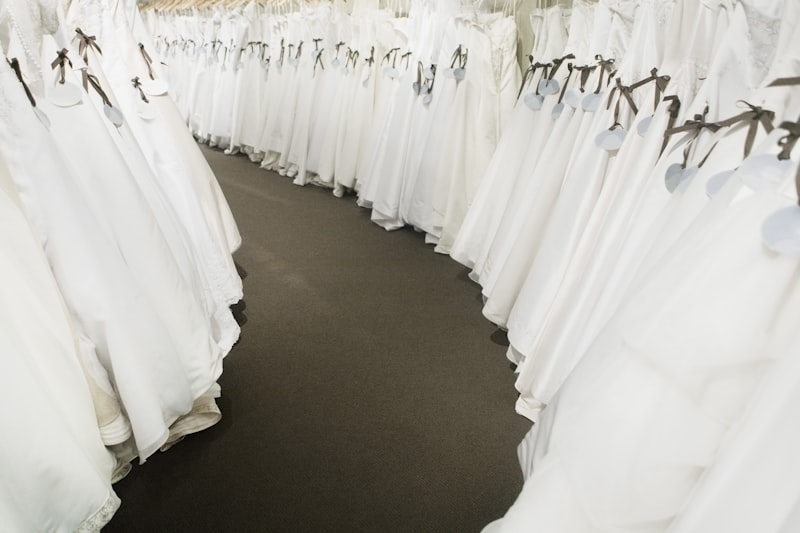How to Check for Pests When Storing Wedding Dresses
How to Check for Pests When Storing Wedding Dresses
Storing Wedding dresses can be a challenging task, especially when considering the potential threat of pests. It's essential to ensure that your precious gown remains in pristine condition for years to come. This article will guide you on how to check for pests when storing Wedding dresses, covering everything from proper storage techniques to identifying signs of pest infestation.
Understanding the Importance of Pest Control
Wedding dresses often hold sentimental value and represent significant financial investment. Their delicate fabrics, such as silk and lace, can attract various pests, including moths, silverfish, and other insects. These pests can cause irreversible damage to your cherished garment if not addressed promptly.
Types of Pests to Watch For
When storing Wedding dresses, it's crucial to be aware of the common pests that can pose a threat:
| Pest | Signs of Infestation | Preventative Measures |
| Moths | Small holes in fabric, silken webs | Store in airtight containers, use mothballs |
| Silverfish | Yellow stains, uneven edges on fabric | Keep the storage area dry, use traps |
| Carpet beetles | Bare patches, shed larvae skins | Regular vacuuming, use lavender or cedar |
Proper Storage Techniques for Wedding dresses
To effectively check for pests, you must first ensure your wedding dress is stored correctly. Here are some crucial steps:
1. Cleaning Your Dress
Before storing your wedding dress, it's vital to have it professionally cleaned. This process removes any food particles or substances that could attract pests. Ensure you choose a dry cleaner experienced with Wedding gowns, as they understand the unique fabrics and embellishments.
2. Choosing the Right Storage Location
Store your wedding dress in a cool, dry place away from direct sunlight. Avoid basements and attics as they can be prone to humidity fluctuations. A temperature-controlled environment is ideal to prevent mold and pest infestations.

3. Using the Right Materials
Use acid-free tissue paper to stuff your wedding dress and maintain its shape. This paper helps absorb moisture, reducing the risk of mold and mildew. Additionally, consider using a breathable cotton or muslin garment bag over your dress. Avoid plastic bags, as they can trap moisture and lead to deterioration.
4. Creating an Airtight Seal
Bagging your wedding dress is essential for pest prevention. Make sure that the cotton or muslin bag is securely closed. You can also seal the storage box with tape for added protection.
Regularly Checking for Pests
Once your wedding dress is stored, it's vital to perform regular checks to ensure that pests have not infiltrated your storage area. Here’s how you can do it:
1. Scheduled Inspections
Set a recurring schedule for inspecting your stored wedding dress. Depending on your environment, you may want to check every three to six months. During these inspections, look for signs of damage or pest activity, such as droppings, webs, or discoloration.
2. Use of Pest Deterrents
Pest deterrents can significantly reduce the risk of infestation. Placing natural repellents such as cedar blocks or lavender sachets in the storage area can naturally ward off moths and other pests. These items not only smell pleasant but also deter pests without the use of harmful chemicals.
Signs of Pest Infestation
Recognizing the signs of pest infestation is critical in safeguarding your wedding dress. Here are some telltale signs to look for:
1. Physical Damage
Inspect the fabric for any small holes, frayed edges, or unusual stains. Moths typically create small holes in delicate fabrics, while silverfish may leave yellow stains.
2. Pest Sightings
Keep an eye out for visible insects in the storage area. Moths and beetles are usually small and can escape detection, so thorough checks are necessary.
Steps to Take if Pests are Detected
If you discover any signs of pest infestation, take immediate action:
1. Removal of the Dress
Carefully remove the wedding dress from storage. Avoid shaking it out, as this can release any larvae or eggs into the air.
2. Professional Treatment
Consider taking your dress to a professional cleaner and pest control expert. They can assess the damage and provide appropriate solutions.
3. Clean and Repack
After treatment, ensure the dress is cleaned again to remove any residue, and repackage it according to the proper storage techniques mentioned previously.
Conclusion
Checking for pests when storing Wedding dresses is a vital step in preserving the beauty and integrity of your gown. By understanding the types of pests, implementing correct storage techniques, and performing regular inspections, you can safeguard your priceless garment from damage. Remember to schedule regular checks, use natural repellents, and act swiftly if you spot any signs of infestation. With these practices in place, your wedding dress can remain undamaged and cherished for generations to come.
For additional queries, feel free to explore questions such as: What are the best storage materials for Wedding dresses? How to identify different pests? What should I do if my wedding dress is already damaged by pests? Ensuring you've covered these facets will lead you to a comprehensive understanding of preserving your wedding dress.
